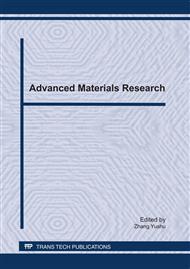p.211
p.216
p.221
p.226
p.231
p.236
p.241
p.246
p.250
The Multi-Objective Optimization Design of Leaf Spring of few Piece Variable Cross-Section
Abstract:
Being the ability of global optimization, MOPSO algorithm have some virtue such as high calculate velocity, good solution quality, great robustness, and so on. In allusion to a leaf spring of few piece variable cross-section, its multi-objective optimization mathematical model was built regarding minimum mass and minimum stiffness deviation as sub-objective functions. Taking the leaf spring of front suspension of a light truck as an example, the Pareto optimal solution set of optimization problem was obtained by using MOPSO algorithm. The optimization results show that the mass of the leaf spring reduced by 24.2% and the stiffness deviation is only 0.32% after optimization by using MOPSO algorithm.
Info:
Periodical:
Pages:
231-235
Citation:
Online since:
February 2011
Authors:
Price:
Сopyright:
© 2011 Trans Tech Publications Ltd. All Rights Reserved
Share:
Citation:


